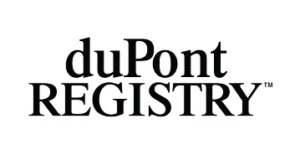
Conversation analytics is an advanced technology that interprets and analyzes verbal and written communication between businesses and their customers. Conversation Analytics and Conversation Intelligence can be used interchangeably in most regards. At its core, Conversation Analytics involves the use of sophisticated tools and algorithms to process, understand, and derive meaningful insights from conversations. This technology leverages a combination of speech recognition, natural language processing (NLP), machine learning, and data analytics to transform unstructured conversation data into actionable intelligence.
The primary objective of conversation analytics is to understand customer needs, preferences, and behaviors by analyzing their interactions with a business. This analysis can cover a wide range of communication channels, including phone calls, live chat sessions, emails, and social media interactions. By dissecting the nuances of these conversations, businesses can gain a deeper understanding of customer sentiment, intent, and overall experience.
The evolution of conversation analytics is closely tied to advancements in artificial intelligence and machine learning. Initially, businesses relied on basic call recording and manual monitoring to understand customer interactions. However, with the advent of AI and sophisticated analytics software, the process has become more automated, accurate, and insightful.
In the digital era, where customer experience is paramount, conversation analytics has become an indispensable tool for businesses. The shift towards online communication and the increasing volume of digital interactions have made it challenging for businesses to keep up with customer expectations and preferences. Conversation analytics bridges this gap by providing deep insights into customer conversations, enabling businesses to tailor their services and communication strategies effectively.
The importance of conversation analytics in the digital era cannot be overstated. It empowers businesses to:
As we continue to navigate the complexities of the digital landscape, the role of conversation analytics in shaping business strategies and enhancing customer relationships becomes increasingly significant. It’s not just about analyzing conversations; it’s about understanding the human element behind every interaction and using that understanding to create better customer experiences.
Conversation analytics operates by capturing and analyzing the content and context of communications between customers and businesses. This process begins with the collection of conversation data, which can be in the form of voice recordings from phone calls, text from chatbots, emails, or social media interactions. Once collected, this data is processed using various analytical tools and technologies.
The analytics process involves several steps:
Artificial Intelligence in Conversation Analytics:
AI plays a crucial role in automating and enhancing the accuracy of conversation analytics. It enables the processing of large volumes of data at high speed, which would be impossible manually.
AI algorithms can identify patterns and trends in conversation data, providing insights into customer behavior and preferences.
Speech and Text Analytics:
Speech analytics involves analyzing voice data from calls. It includes recognizing speech patterns, tone, and sentiment.
Text analytics is used for written communication like emails, chatbot conversations, and social media posts. It involves text mining techniques to extract useful information from the written text.
Machine Learning and Natural Language Processing:
Machine Learning (ML) is used to improve the accuracy of analytics over time. ML algorithms learn from new data, continuously refining their ability to analyze and interpret conversations.
Natural Language Processing (NLP) is a subset of AI that helps computers understand, interpret, and manipulate human language. NLP is crucial for analyzing the semantics and context of conversations, enabling a deeper understanding of customer interactions.
These technologies work in tandem to transform raw conversation data into meaningful insights. By analyzing not just what is said, but how it’s said, conversation analytics provides a comprehensive view of customer interactions. This includes understanding customer sentiment, identifying common issues or queries, and even predicting customer behavior based on historical data.
Deepened Understanding of Customer Needs: Conversation analytics allows businesses to delve into the specifics of what customers are looking for, their concerns, and their preferences. This deep understanding enables a more personalized and satisfying customer experience.
Proactive Issue Resolution: By analyzing customer conversations, businesses can identify and address issues before they escalate, leading to a proactive approach in managing customer satisfaction.
Customized Product Offerings: Insights from conversation analytics can guide businesses in tailoring their products or services to meet the specific needs and desires of their customers, enhancing the overall customer experience.
Data-Driven Decision Making: Conversation analytics provides valuable data that can inform and refine sales and marketing strategies, ensuring they are aligned with customer expectations and trends.
Enhanced Lead Generation and Nurturing: By understanding customer conversations, businesses can better identify potential leads and nurture them more effectively through personalized communication strategies.
Optimized Marketing Messages: Insights from customer conversations can be used to craft marketing messages that resonate more strongly with the target audience, improving engagement and conversion rates.
Efficient Service Delivery: Conversation analytics helps in identifying common customer queries and issues, allowing for the development of more efficient processes and quicker resolution times.
Improved Agent Performance: The insights gained from conversation analytics can be used for targeted training, helping customer service agents to enhance their communication skills and problem-solving abilities.
Resource Optimization: By understanding the nature and volume of customer interactions, businesses can better allocate resources to meet customer service demands effectively.
Innovative Customer Insights: Conversation analytics provides unique insights that can give businesses a competitive edge in understanding and meeting customer needs more effectively than their competitors.
Agility in Market Response: The real-time nature of conversation analytics allows businesses to quickly adapt to market changes and customer feedback, maintaining a competitive stance in a dynamic market.
Enhanced Brand Reputation: By consistently meeting and exceeding customer expectations through insights gained from conversation analytics, businesses can strengthen their brand reputation and loyalty.
Personalized Shopping Experiences: In retail, conversation analytics helps in understanding customer preferences and shopping patterns, enabling personalized product recommendations and targeted promotions.
Customer Feedback for Product Improvement: Retailers use conversation data to gather feedback on products, which can be crucial for product development and inventory management.
Enhancing Online Customer Support: E-commerce platforms leverage conversation analytics to optimize their chatbot responses and customer support interactions, ensuring a smoother online shopping experience.
Patient Care and Support: Conversation analytics in healthcare provides insights into patient concerns and queries, enabling more effective communication and support from healthcare providers.
Appointment Scheduling and Follow-ups: By analyzing phone conversations, healthcare providers can streamline appointment scheduling processes and improve follow-up communications.
Compliance and Quality Control: Conversation analytics assists in maintaining compliance with healthcare regulations and standards, ensuring quality patient care and data privacy.
Customer Service Optimization: Banks and financial institutions use conversation analytics to enhance customer service, tailoring advice and solutions to individual customer needs.
Fraud Detection and Prevention: Analyzing conversation patterns helps in identifying potential fraudulent activities, thereby enhancing security in financial transactions.
Product and Service Customization: Insights from customer conversations guide the development of customized financial products and services, aligning with specific customer requirements.
Improving Customer Retention: Telecommunication companies use conversation analytics to identify reasons for customer churn and develop strategies to improve retention.
Service Optimization: Conversation data helps in optimizing network services and customer support based on specific issues and feedback highlighted by customers.
Targeted Marketing Campaigns: Understanding customer preferences and concerns through conversation analytics enables telecom companies to create more effective and targeted marketing campaigns.
Feature Set: Look for software that offers comprehensive features such as sentiment analysis, topic categorization, and predictive analytics.
Ease of Use: The software should be user-friendly, with an intuitive interface and accessible reporting tools.
Scalability: Ensure that the software can scale with your business and handle increasing volumes of data as your business grows.
Support and Training: Consider the level of customer support and training provided by the software vendor.
Compliance and Security: The software should comply with relevant data privacy regulations and offer robust data security measures.
Compatibility: Ensure that the conversation analytics software can integrate with your existing CRM, data warehouses, and other key systems.
Data Synchronization: Set up processes for seamless data synchronization between systems to maintain data accuracy and consistency.
Workflow Integration: Integrate conversation analytics insights into your existing workflows to enhance decision-making processes across departments.
Staff Training: Conduct comprehensive training sessions for staff to familiarize them with the new tools and analytics processes.
Ongoing Learning: Implement ongoing learning and development programs to keep staff updated with new features and best practices in conversation analytics.
Building a Data-Driven Culture: Foster a culture that values data-driven decision-making, encouraging staff to regularly use analytics insights in their roles.
Anticipating Customer Needs: Conversation analytics can be used to predict future customer behavior and preferences by analyzing past interactions. This predictive capability allows businesses to proactively address customer needs.
Trend Identification: By continuously analyzing conversation data, businesses can identify emerging trends and patterns, enabling them to stay ahead of market shifts.
Customer Journey Mapping: Advanced analytics can map out the entire customer journey, providing insights into key touchpoints and opportunities for engagement and improvement.
Understanding Customer Emotions: Sentiment analysis within conversation analytics helps in gauging the emotional tone of customer interactions, allowing businesses to respond with greater empathy and understanding.
Enhancing Customer Relationships: By recognizing and responding to emotional cues, businesses can build stronger, more personal relationships with their customers.
Feedback Loop for Product and Service Development: Emotional insights from customer conversations can inform product development and service enhancements, ensuring they resonate more deeply with customer needs and expectations.
Immediate Insights for Immediate Actions: Real-time conversation analytics provide instant insights, enabling businesses to make quick decisions in response to customer interactions.
Enhancing Customer Support: In customer support scenarios, real-time analytics can guide agents in how to respond to customer queries and issues more effectively.
Dynamic Strategy Adjustment: The ability to analyze conversations as they happen allows businesses to dynamically adjust their strategies and operations to better meet customer needs and market demands.
Anticipating Customer Needs: Conversation analytics can be used to predict future customer behavior and preferences by analyzing past interactions. This predictive capability allows businesses to proactively address customer needs.
Trend Identification: By continuously analyzing conversation data, businesses can identify emerging trends and patterns, enabling them to stay ahead of market shifts.
Customer Journey Mapping: Advanced analytics can map out the entire customer journey, providing insights into key touchpoints and opportunities for engagement and improvement.
Understanding Customer Emotions: Sentiment analysis within conversation analytics helps in gauging the emotional tone of customer interactions, allowing businesses to respond with greater empathy and understanding.
Enhancing Customer Relationships: By recognizing and responding to emotional cues, businesses can build stronger, more personal relationships with their customers.
Feedback Loop for Product and Service Development: Emotional insights from customer conversations can inform product development and service enhancements, ensuring they resonate more deeply with customer needs and expectations.
Immediate Insights for Immediate Actions: Real-time conversation analytics provide instant insights, enabling businesses to make quick decisions in response to customer interactions.
Enhancing Customer Support: In customer support scenarios, real-time analytics can guide agents in how to respond to customer queries and issues more effectively.
Dynamic Strategy Adjustment: The ability to analyze conversations as they happen allows businesses to dynamically adjust their strategies and operations to better meet customer needs and market demands.
Maintaining Customer Trust: One of the primary challenges in conversation analytics is ensuring the privacy and security of customer data. Businesses must navigate the fine line between gathering insightful data and respecting customer confidentiality.
Compliance with Regulations: Adhering to data protection regulations like GDPR and HIPAA is crucial. Businesses must ensure their conversation analytics practices comply with these legal requirements to avoid penalties and maintain customer trust.
Secure Data Handling: Implementing robust security measures to protect conversation data from unauthorized access and breaches is essential for maintaining the integrity of the analytics process.
Data Quality and Accuracy: Ensuring the accuracy and quality of the data being analyzed is vital. Poor quality data can lead to misleading insights and erroneous conclusions.
Integration with Existing Systems: Seamlessly integrating conversation analytics tools with existing CRM and data systems can be challenging but is necessary for comprehensive analysis.
Scalability: As businesses grow, their conversation analytics solutions must scale accordingly. This requires flexible and adaptable systems that can handle increasing volumes of data.
Advanced AI and Machine Learning Models: Utilizing advanced AI and machine learning models can enhance the accuracy and reliability of conversation analytics.
Continuous Model Training and Updating: Regularly training and updating the analytical models with new data ensures that the insights remain relevant and accurate.
Expert Review and Oversight: While AI plays a significant role in conversation analytics, human oversight is still crucial for interpreting data and making informed decisions.
Advancements in AI and Machine Learning: Future developments in AI and machine learning are expected to significantly enhance the capabilities of conversation analytics, making it more accurate, insightful, and predictive.
Integration with IoT and Wearables: The integration of conversation analytics with IoT devices and wearables could open new avenues for understanding customer behaviors and preferences in real-time and in more contexts.
Voice Biometrics for Personalization and Security: The use of voice biometrics is anticipated to grow, offering new ways to personalize customer experiences while enhancing security measures.
Automated, Real-Time Analysis: AI and machine learning will enable more sophisticated real-time analysis of conversations, providing immediate insights and allowing businesses to react promptly to customer needs.
Predictive Customer Behavior Modeling: These technologies will advance in predicting customer behaviors and preferences, enabling businesses to anticipate needs and tailor their strategies accordingly.
Enhanced Natural Language Understanding: AI’s ability to understand and interpret human language will continue to improve, making conversation analytics more nuanced and effective.
Widespread Adoption Across Industries: Conversation analytics is expected to become a standard tool across various industries, essential for customer relationship management and business strategy.
Greater Emphasis on Ethical AI: As AI becomes more integral to conversation analytics, there will be a greater focus on developing and using AI ethically, ensuring fairness and avoiding biases.
Customizable and Adaptive Analytics Tools: Future conversation analytics tools are likely to be more customizable and adaptive, catering to the specific needs of different businesses and industries.
Conversation analytics has emerged as a pivotal tool in the modern business landscape, offering profound insights into customer interactions. This technology leverages advanced AI, machine learning, and natural language processing to analyze and interpret conversations across various channels, providing businesses with invaluable data to enhance customer experiences, refine marketing strategies, and improve operational efficiency.
Key takeaways include:
In an era where customer experience is a key differentiator, conversation analytics stands as a strategic asset. It not only provides a competitive edge but also aligns businesses closely with their customers’ evolving needs. The ability to analyze and act on customer conversations is no longer a luxury but a necessity for businesses aiming to thrive in a customer-centric market.
As we look towards the future, the role of conversation analytics will only grow in significance. Businesses should consider investing in this technology not just as a tool for data analysis but as a cornerstone for building stronger, more meaningful customer relationships. The key to success lies in choosing the right analytics solution, ensuring seamless integration with existing systems, and fostering a data-driven culture within the organization.
For businesses seeking to stay ahead in a rapidly evolving market, embracing conversation analytics is a step towards a more informed, customer-focused, and successful future.

Book A Quick 15 Minute Call,
And We’ll Show You How To Unlock The Power Of Every Conversation.




























©2025 All rights reserved – Convirza